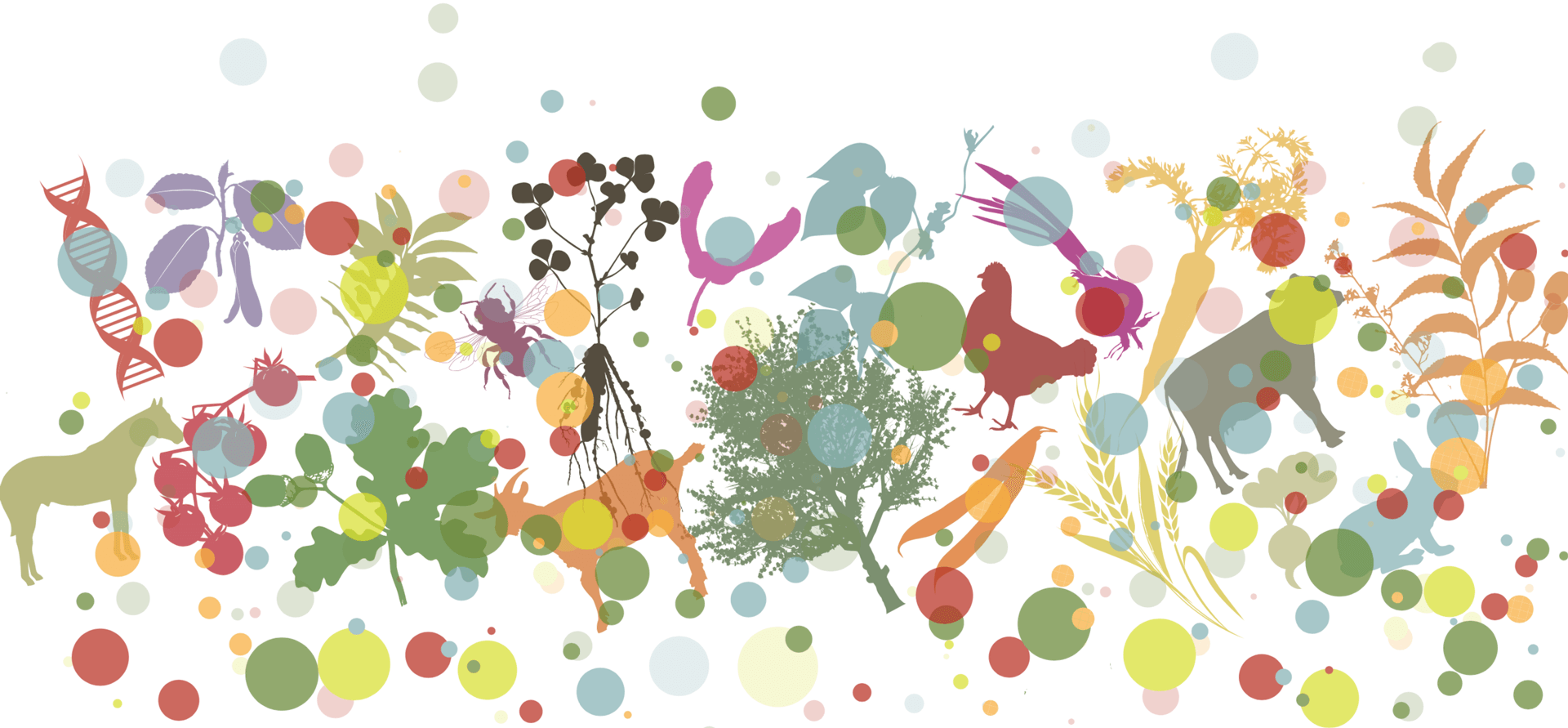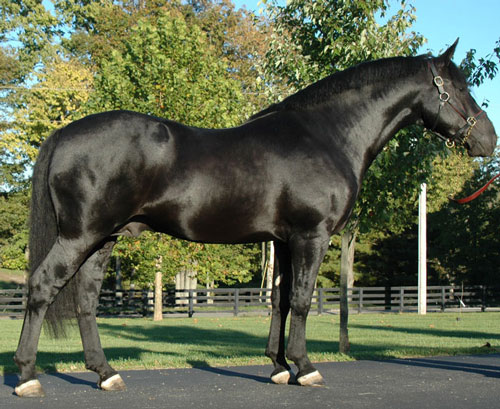The genetic composition of the Traditional Irish Horse – towards the development of a DNA-ancestry test for the preservation of traditionally bred Irish Sport Horses
Main Article Content
Abstract
The traditionally bred Irish Sport Horse, known as the Traditional Irish Horse, is an important cultural asset to horse genetic resources in Ireland. We tested the hypothesis that the Irish Sport Horse, which was originally developed from the Irish Hunter, may contain a genetic background distinct from European horse populations that would be valuable to preserve. Using genome-wide single nucleotide (SNP) data, the results show that Traditional Irish Horses (with confirmed pedigrees) have lower levels of European ancestry components than other Irish Sport Horses. These results indicate that measurement of the levels of European ancestry components in the Irish Sport Horse may assist in the preservation of traditional Irish lineages.
Article Details

This work is licensed under a Creative Commons Attribution 4.0 International License.
Authors retain copyright of the articles published in Genetic Resources and grant the journal right of first publication with open access. All articles published in Genetic Resource are licensed under Creative Commons Attribution 4.0 International License (CC BY 4.0) that allows others to download, share and adapt the work for commercial and non-commercial purposes as long as proper attribution to the original article is given. Genetic Resources permits and encourages authors to post items submitted to the journal (including the publisher's final layout) on personal websites or institutional repositories after acceptance and/or publication, while providing bibliographic details that credit their publication in Genetic Resources.
Alexander, D H, J Novembre, and K Lange (2009). “Fast model-based estimation of ancestry in unrelated individuals”. Genome Res 19. DOI: https://doi.org/10.1101/gr.094052.109. DOI: https://doi.org/10.1101/gr.094052.109
Bendrey, R et al. (2013). “The Origins of Domestic Horses: New Direct Dates on the Horses of Newgrange, Ireland”. Proceedings of the Prehistoric Society 79, pp. 91–103. DOI: https://doi.org/10.1017/ppr.2013.3. DOI: https://doi.org/10.1017/ppr.2013.3
Bower, M A et al. (2011). “The cosmopolitan maternal heritage of the Thoroughbred racehorse breed shows a significant contribution from British and Irish native mares”. Biol Lett 7. DOI: https://doi.org/10.1098/rsbl.2010.0800. DOI: https://doi.org/10.1098/rsbl.2010.0800
Chang, C C et al. (2015). “Second-generation PLINK: rising to the challenge of larger and richer datasets”. Gigascience 4. DOI: https://doi.org/10.1186/s13742-015-0047-8. DOI: https://doi.org/10.1186/s13742-015-0047-8
Doyle, J L et al. (2022). “An overview of international genetic evaluations of show jumping in sport horses”. Transl Anim Sci 6. DOI: https://doi.org/10.1093/tas/txac038. DOI: https://doi.org/10.1093/tas/txac038
FAO (2023). Genomic characterization of animal genetic resources. Ed. by P Ajmone-Marsan et al. Rome, Italy: FAO Animal Production and Health Guidelines No. 32. DOI: https://doi.org/10.4060/cc3079en. DOI: https://doi.org/10.4060/cc3079en
Felicetti, M et al. (2010). “Genetic diversity in the Maremmano horse and its relationship with other European horse breeds”. Anim Genet 41(2). DOI: https://doi.org/10.1111/j.1365-2052.2010.02102.x. DOI: https://doi.org/10.1111/j.1365-2052.2010.02102.x
Gilbert, M and J Gillet (2011). “Equine athletes and interspecies sport”. International Review for the Sociology of Sport 47. DOI: https://doi.org/10.1177/1012690211416726. DOI: https://doi.org/10.1177/1012690211416726
Hendricks, B L (1995). International Encyclopedia of Horse Breeds. University of Oklahoma Press.
Lawson, D J, L Van Dorp, and D Falush (2018). “A tutorial on how not to over-interpret STRUCTURE and ADMIXTURE bar plots”. Nat Commun 9. DOI: https://doi.org/10.1038/s41467-018-05257-7. DOI: https://doi.org/10.1038/s41467-018-05257-7
Luis, C et al. (2007). “Genetic diversity and relationships of Portuguese and other horse breeds based on protein and microsatellite loci variation”. Anim Genet 38, pp. 20–27. DOI: https://doi.org/10.1111/j.1365-2052.2006.01545.x. DOI: https://doi.org/10.1111/j.1365-2052.2006.01545.x
Lydon, J F (1954). The Hobelar: An Irish Contribution to Medieval Warfare. McCormick, F (2007). “The horse in early Ireland”. Anthropozoologica 42, pp. 85–104.
McGahern, A M et al. (2006). “Mitochondrial DNA sequence diversity in extant Irish horse populations and in ancient horses”. Anim Genet 37. DOI: https://doi.org/10.1111/j.1365-2052.2006.01506.x. DOI: https://doi.org/10.1111/j.1365-2052.2006.01506.x
Molomane, D K et al. (2018). “Efficiency of different strategies to mitigate ascertainment bias when using SNP panels in diversity studies”. BMC Genomics 19(1). DOI: https://doi.org/10.1186/s12864-017-4416-9. DOI: https://doi.org/10.1186/s12864-017-4416-9
Petersen, J L et al. (2013). “Genetic diversity in the modern horse illustrated from genome-wide SNP data”. PLoS One 8. DOI: https://doi.org/10.1371/journal.pone.0054997. DOI: https://doi.org/10.1371/journal.pone.0054997
Puechmaille, S J (2016). “The program structure does not reliably recover the correct population structure when sampling is uneven: subsampling and new estimators alleviate the problem”. Mol Ecol Resour 16, pp. 608–635. DOI: https://doi.org/10.1111/1755-0998.12512. DOI: https://doi.org/10.1111/1755-0998.12512
Purcell, S et al. (2007). “PLINK: A Tool Set for Whole-Genome Association and Population-Based Linkage Analyses”. American Journal of Human Genetics 81. DOI: https://doi.org/10.1086/519795. DOI: https://doi.org/10.1086/519795
R Core Team (2014). R: A language and environment for statistical computing. R Foundation for Statistical Computing. Vienna, Austria.
Reilly, M et al. (1998). “Estimation of genetic value of showjumping horses from the ranking of all performances in all competitions”. Journal of Animal Breeding and Genetics 115, pp. 17–25. DOI: https://doi.org/10.1111/j.1439-0388.1998.tb00324.x. DOI: https://doi.org/10.1111/j.1439-0388.1998.tb00324.x
Unattributed (c. 800). The Book of Kells. Trinity College Library Dublin. DOI: https://doi.org/10.48495/hm50tr726.
Youatt, W (1831). The horse; with a treatise on draught. London, UK: Baldwin and Cradock. DOI: https://doi.org/10.5962/bhl.title.100159







 This journal has been conceived as part of the
This journal has been conceived as part of the